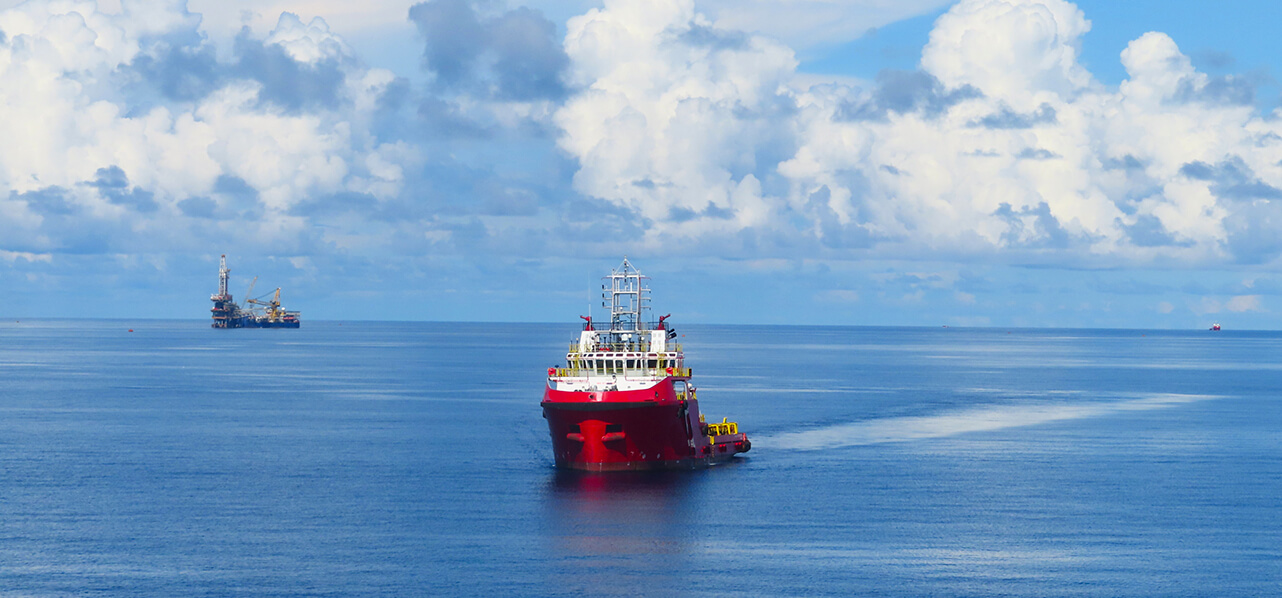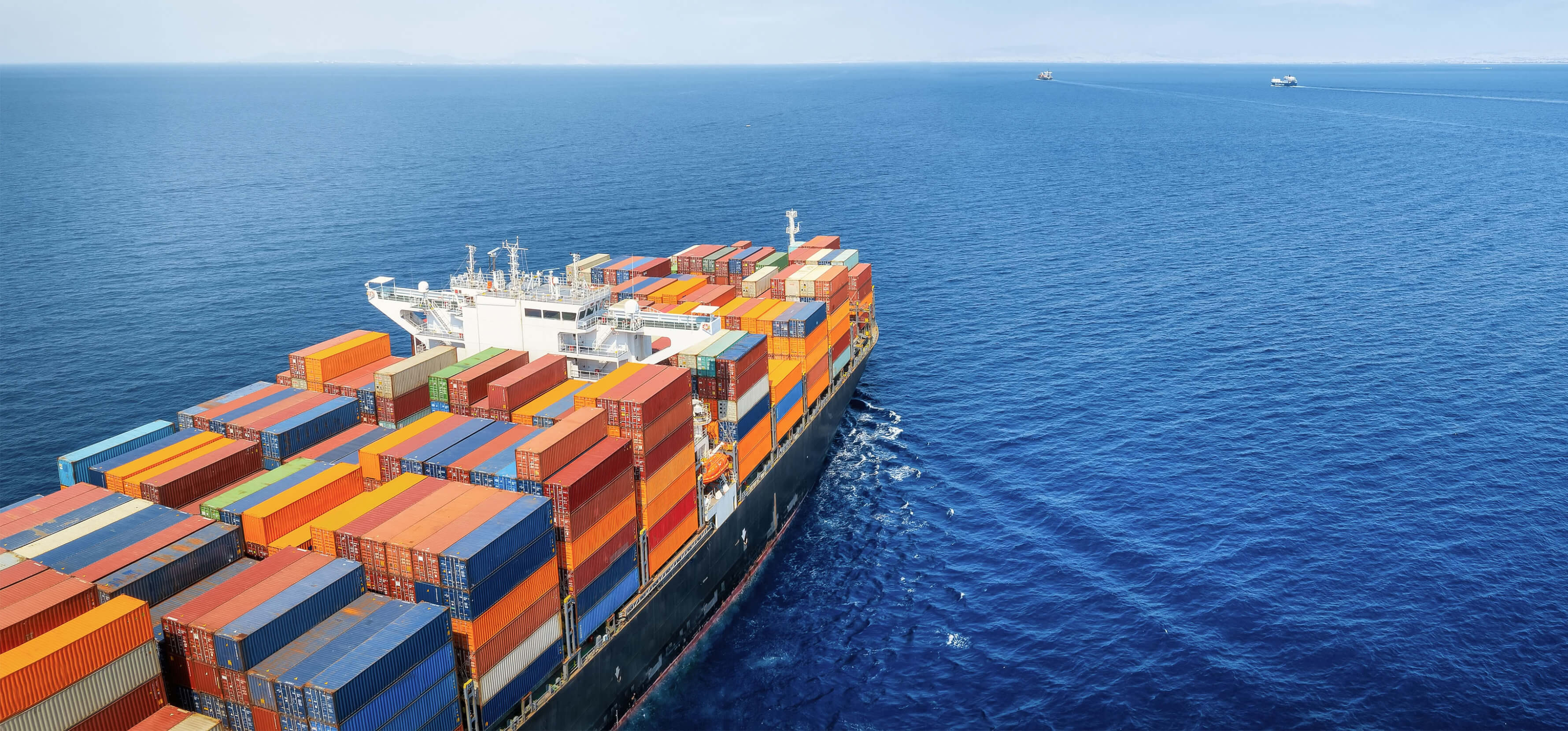Partner London
"FEMREG is intended to complement the EU Emissions Trading Scheme for maritime which came into force on 1 January 2024."
Background
FEMREG’s overarching purpose is to accelerate the use of renewable and low-carbon fuels in shipping. It forms part of the EU’s Fit for 55 Package, aimed at reducing energy-related greenhouse gas (“GHG”) emissions by at least 55% by 2030 (compared to 1990 levels). FEMREG is intended to complement the EU Emissions Trading Scheme for maritime which came into force on 1 January 2024 (see our most recent article on EU ETS here) and is specifically structured to promote reduction of GHG intensity of ships arriving at, staying in or departing from an EU/ European Economic Area (“EEA”) port.
Scope and applicability
FEMREG is even more pernickety that EU ETS due to its highly technical and mathematical nature. It applies to ships over 5,000 GT, arriving at or departing from EU/EEA ports and regulates fuel consumption as follows:
- voyages between EU/EEA and non-EU/EEA ports: 50% of consumption;
- voyages within the EU/EEA ports: 100% of consumption; and
- berthing in EU/EEA ports: 100% of consumption.
Container ships stopping in transshipment ports outside the EU/ EEA, which are less than 300 nautical miles from an EU/EEA port will also be obliged to include 50% of the energy of the voyage to that port.
What are the key obligations?
FEMREG places obligations on ‘shipping companies’ to reduce the GHG intensity of energy used onboard their ships on the following phased basis:
- 2% by 2025;
- 6% by 2030;
- 14,5% by 2035;
- 31% by 2040;
- 62% by 2045; and
- 80% by 2050.
"GHG emissions are calculated on a well-to wake basis: this means emissions related to fuel cultivation, production, transportation, extraction and usage on board."
GHG emissions are calculated on a well-to wake basis: this means emissions related to fuel cultivation, production, transportation, extraction and usage on board. The reduction required in the lifecycle GHG intensity of fuels will be measured based on reported fuel consumption similar to EU MRV. There will be a financial penalty for each quantum of energy used above the reference level. The revenues obtained from the penalties will be used in support of renewable and low carbon fuel usage.
‘Shipping company” is defined in Article 3 (13) of FEMREG as either the registered owner or the ISM Company which has been contractually mandated to comply. ¹ While this definition is the same as the ETS, the key difference is that there is no obligation to register a shipping company under FEMREG as there is under EU ETS.
Furthermore, FEMREG contains an express reference to the right of the “shipping company” to pass on compliance and penalty costs not only to commercial operators (e.g. ISM company) but also to fuel suppliers, if it should choose to do so. This is a watered-down aspect of the regulation since initial proposals contained a direct obligation on fuel suppliers to supply a certain amount of low carbon fuel. As things stand, any recourse shipping companies would now have against fuel suppliers would be no more than contractual, and it remains to be seen how effective this right will be in reality.
Key obligations and compliance deadlines falling on ‘shipping companies’ include:
- by 31 August 2024 ‘shipping companies’ are obliged to submit a standardised monitoring plan (the “Fuel EU Monitoring Plan”) per vessel to verifiers demonstrating what fuels and methodologies will be used to meet the GHG intensity targets listed above. The methodology is set out in Annex I of FEMREG. (For any new shipping companies falling under FEMREG after the 31 August deadline the requirement to submit the Fuel EU Monitoring Plan will have to be met within two months of the first port of call in the EEA);
- from 1 January 2025 shipping companies will be required to start monitoring emissions from each ship arriving at or departing from a port of call in accordance with the independently verified Fuel EU Monitoring Plan and will be required to record prescribed information as set out in Article 15 of the regulation. This includes recording well-to-wake carbon equivalent emissions per megajoule of energy for all energy used on board;
- by 31st January 2026 and thereafter, shipping companies will be required to provide to the verifier a ship-specific report (the “FuelEU report”) containing prescribed information set out in Article 15 as well as prescribed monitoring data and supporting technical documentation; and
- from 30 June 2026 and thereafter, shipping companies will be obliged to carry onboard each ship a FuelEU Document of compliance which is issued annually by the verifier.
Who will be responsible for compliance?
As with the EU ETS, the ‘shipping company’ will be responsible for compliance with FEMREG.
There has been some suggestion that the responsible entity under FEMREG is different from the responsible entity under EU ETS, and that responsibility for compliance with FEMREG falls on the entity responsible for the vessel’s ISM obligations, whereas pursuant to EU ETS it can be either the shipowner or any other organisation that has agreed to be responsible for the ISM obligations. This is not the case. Under both laws the default responsible party will always be the registered owner unless it has been mandated to the ISM. The key difference however is that under EU ETS the registered Participant will be the regulated entity, and the first (or the last, as the case may be, if the ISM registered participant goes insolvent) to face any enforcement action and penalty orders. Under FEMREG however, it will always be the registered owner that faces the regulator, regardless of its contractual arrangements with others.
"Much like maritime EU ETS, FEMREG is only partially implemented."
Renewable Fuels of Non-Biological Origin
FEMREG purports to encourage the use of Renewable Fuels of Non-Biological Origin (“RFNBOs”), such as e-ammonia and e-methanol. The regulation incentivises the use of RFNBOs with a bespoke reward factor of “2” included in the calculation of the GHG intensity of energy used on board. This can be used from 1 January 2025 to 31 December. The methodology for this calculation is set out in Annex 1.²
If RFNBO usage equals less than 1% of the overall fuel mix during 2031 and less than 2% in 2033, then a new sub-target will be introduced from 2034 so that they make up a minimum 2% of yearly energy used onboard a ship. Using equivalent non-RFNBO fuels (for example, biofuels), with a similar or higher potential to decarbonise, may also count towards this sub-target. However, biofuels produced from food or feed crops are considered to have the same emission factors as the least favourable fossil fuels and are, therefore, not included as part of RFNBOs. FEMREG’s treatment of biofuels from food and feed crops is currently subject to legal challenge by European ethanol producers.³
Banking, borrowing and ‘pooling’ of emissions
FEMREG allows banking and borrowing of compliance surplus for each ship between reporting periods. Any compliance surplus may be banked until the following reporting period. Any compliance deficit may borrow an advance compliance surplus from the subsequent reporting period. However, it will be subtracted from the subsequent reporting period at a punitive rate. FEMREG also gives shipping companies the option to pool their compliance balance with other ships even with those outside of their shipping company. However, the pool as a whole must meet the GHG intensity limit as well as other specific requirements. Once a FuelEU Document of Compliance (“DoC”) is issued, surplus banking or use of an advanced surplus may not be changed.
Pooling emissions penalties and surplus ‘credits’ may allow for huge cost savings. Further, it means that companies investing in a ship that runs on low carbon fuel can reduce their exposure and increase their bargaining power by offering to pool with other non-compliant vessels. According to a Finish consultancy, one methanol powered vessel in a pool can make 75 vessels running on HFO compliant.⁴ However, parties must remain vigilant, as depending on the type of charter party agreement and particularly where charterers are responsible for buying the fuel, the regulation does not define whether it is the shipowner or charterer who owns the surplus associated with a vessel. This is something that will have to be agreed commercially between the parties. Similar to EU ETS, the FEMREG regime offers potential commercial opportunities for shipowners to trade emissions allowances as well as FEMREG surplus credits.
Further detail awaited
Much like maritime EU ETS, FEMREG is only partially implemented. Partial implementation of EU ETS has meant that very few shipping companies have been able to register so far and very few registries are currently in position to open MOHAs due to being inundated with applications and thin on time and resources. This lack of preparedness is having a knock-on effect on shipping, particularly when it comes to effective transfer of ETS responsibility. Furthermore, only a handful of member states have implemented the EU ETS costs and enforcement provisions thus creating further uncertainty as to the level of risk that ETS potentially presents in the long term. FEMREG will likely be even more chaotic. Delays and implementation challenges are likely, given that the EU is still preparing FAQs specific to FEMREG and consultations on essential detail have only just closed for the following:
- the draft implementing act on verification activities;
- the draft implementing act on the template for standard monitoring plans; and
- the draft delegated act on methods and criteria for the accreditation of verifiers.
Consequences of non-compliance
"FEMREG is built to bolster a collaborative approach between ship owners, charterers, ship managers and fuel suppliers to meet new fuel standards."
Compliance penalties will be applied from 1 May 2026 which is the first reporting year. These will be calculated in accordance with prescribed formulas included in the annexes to the regulation. Failure to comply with the regulation’s requirement to have a DoC for two or more consecutive reporting years, starting from June 2026, will result in the competent authority of the EEA Member State of the port issuing an expulsion order or refusing entry to any ship that is subject to an expulsion order until the shipping company fulfils its obligations. Further detail on how Fuel EU penalty calculations will work in practice and guidance on enforcement is expected to be published in due course. We will provide a further update when this happens.
How can you prepare?
We would recommend focusing on top four priorities when formulating your compliance strategy for FEMREG.
- start preparing fuel compliance strategies now;
- start reviewing your existing as well as any new contractual arrangements with charterers, ship managers and fuel suppliers, to ensure that the roles for sourcing and supplying low carbon fuels or for picking up any penalty costs when there are non-compliances, are clearly demarcated contractually and provided for;
- consider either investing (or co-investing) in low carbon vessels that could offset non-compliant emissions from the rest of your fleet and could potentially also make you some money through ‘pooling’ or trading of your ‘surplus’ credits to the poorly performing FEMREG participants; and
- lastly, we recommend including bespoke collaborative and cost sharing provisions in charterparties which enable future compliance with the mandated GHG intensity reductions through reduced use of fossil fuels and greater use of qualifying biofuels, RFNBOs and of wind assisted propulsion equipment. Slow steaming will not be enough to achieve this.
Conclusion
FEMREG is built to bolster a collaborative approach between ship owners, charterers, ship managers and fuel suppliers to meet new fuel standards. This will involve sharing the burden of compliance through new partnerships and novel business models as well as through balanced and proportionate cost sharing. The cost of compliance, particularly when factoring in highly technical and complex formulas for calculating non-compliance penalties or well to wake greenhouse gas intensity of fuels are set to strike the maritime sector hard, particularly at a time when it is already grappling with the challenges presented by the EU ETS and the Red Sea crisis. It remains to be seen whether FEMREG will achieve its decarbonisation objectives.
footnotes
[1] Defined in Article 3 (13) of FEMREG as either the registered owner or the ISM Company which has been contractually mandated to comply: “‘company’ means the shipowner or any other organisation or person such as the manager or the bareboat charterer, which has assumed the responsibility for the operation of the ship from the shipowner and has agreed to take over all the duties and responsibilities imposed by the International Management Code for the Safe Operation of Ships and for Pollution Prevention”
[2] Annex 1 provides that where the fuel is of non-biological origin, a reward factor of 2 from 1 January 2025 to 31 December 2033 can be applied. Otherwise the reward factor is 1.
Key contacts
Partner London
Counsel London





